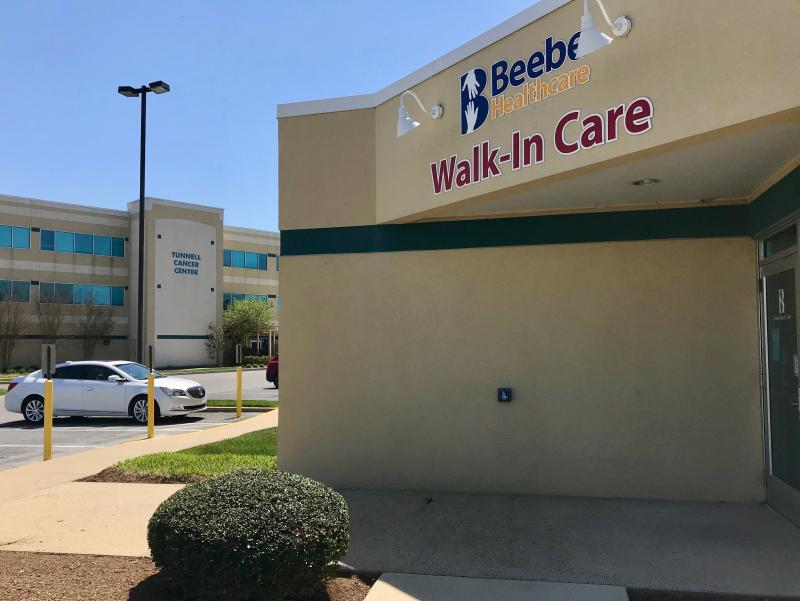Beebe reports best fiscal year in 100-year history
Beebe Healthcare experienced its best year ever in its 100-year history for the 12-month period that ended in June 2017. “Our total dollars were up for that fiscal year; our operating income [money left after all expenses were considered] was our highest ever, as were our inpatient and outpatient volumes,” said Beebe Chief Financial Officer Paul Pernice. “That’s more dollars we have to reinvest in the community.”
I met recently with Beebe President Jeff Fried, Chief Operating Officer Richard Schaffner, Vice President of External Affairs Alex Sydnor, and Pernice to discuss the numbers.
According to a financial report published in late March, Beebe’s total net patient revenue for the 2017 fiscal year came in at $405,476,340. That was up from $381,106,324 in FY2016, a $24 million increase. Bottom-line income from operations came in at $20,023,430 in FY2017 compared to $16,281,727 in FY2016, about a 25 percent increase.
The report also shows that Beebe recorded $7,098,519 in charity care and bad debt for FY2017.
The report further shows the huge, and growing, economic impact Beebe has in the eastern Sussex County area it serves. Salaries paid by Beebe in FY2017 totaled $159,177,362 along with another $52 million worth of employee benefits. The salary total was up $10 million over the previous year.
“Our average salary, not including doctors, is $72,000 per year,” said Fried. “Sussex County has the highest real estate prices and the lowest salaries overall in Delaware, but we compete with hospitals in the Wilmington and Philadelphia area for qualified people and have to pay that much to remain competitive.”
Beebe employs over 2,500 people with more than 400 doctors and practitioners. It also has about 680 volunteers who provided 73,000 hours of work in FY2017. Its medical facilities treat everything from splinter removals to open heart surgery. It’s worth reminding readers that Beebe Healthcare is a community-owned, not-for-profit facility managed by professional administrators. They answer to a board of volunteer directors who live in the community.
Trends changing
Trends that pushed Beebe to its best financial year are changing. “We were in a spike that started in the spring of 2014 that saw a large increase in inpatient admissions,” said Sydnor. “We speculate that the spike may have resulted from people who lived outside of Sussex starting to move into their retirement homes. It could be that they put that off after the crash in 2008 but there was possibly a reverse in 2014. We noticed there was an increase in the number of inpatients whose primary residence wasn’t listed as in Sussex. That has started to taper off now.”
He said in FY2017 the average inpatient total for the hospital was 151. Recently, that number has been hovering in the 143 to 144 area.
Fried said Beebe isn’t seeing the same kind of growth so far in the 2018 fiscal year. “I think some of it is due to our efforts to keep people out of the hospital. The volumes of people going to our walk-in clinics increased by 40 percent from FY2016 to FY2017. We’re working very hard to treat patients in the correct setting. Walk-in clinics instead of emergency room visits, more outpatient procedures, and more home health care visits designed to keep people out of the hospital.”
Schaffner said Beebe and the Medicare system track three trends considered significant for efficient and high-quality inpatient facilities. Beebe, he said, is moving in the right direction in all three. “Potentially avoidable admissions are down; readmissions are down, and the length of stay is down.”
Beebe has a high percentage of Medicare patients due to the older population of Sussex County. “We lose money on every Medicare patient,” said Fried. “So the more we’re able to keep them out of inpatient status by providing quality care in the right setting, the less money we lose.” The annual report shows that in FY2017, Beebe generated more than $42 million in unreimbursed expenses from Medicare and Medicaid.
Beebe staff are now seeing more patients on a daily basis in their homes than in the hospital on the main campus in Lewes. Schaffner said home health visits from nurses and therapists increased by 13 percent from 2016 to 2017, and those numbers are running 5 percent ahead so far this year.
Outpatient procedures dominating
Outpatient procedures continue to dominate at Beebe. They currently represent 55 percent of the total patient volume and are expected to keep growing.
Meanwhile, by increasing the level of care available through its walk-in clinics, Beebe has seen an 18 percent reduction in the number of nonemergency cases showing up in its emergency rooms where costs to provide services are much higher. “Our walk-in clinics are lower cost and more convenient for most people,” said Fried.
Operating income goes toward an estimated $20 million in annual capital expenses for improvements.
Beebe is in the midst of constructing an $11 million addition in Lewes for a heart and vascular surgical center which will also include state-of-the-art technology for less-invasive catheterization procedures. Sydnor said Beebe also recently filed its applications to the state for certificates of need for a $35 million expansion in the Millville area. That expansion will include a freestanding emergency department, expanded walk-in care services, and a second cancer center, all sited on Beebe’s South Coastal Campus.
And it is still finalizing plans for its overall $180 million Next Generation of Care initiative. In addition to the other mentioned improvements, that includes a new, four-story patient wing on Savannah Road in Lewes and a specialty surgical hospital for shorter-term inpatients, and outpatients, on its Route 24 Rehoboth Beach campus.
At a time when hospitals across the country are consolidating and decommissioning beds, Beebe finds itself having to increase beds to meet the needs in its growing area. The good year it experienced places it in a unique position among community hospitals across America. “Community hospitals like ours are realizing average operating margins of about 1.4 percent. We did 5 percent in FY2017,” said Pernice.
“I think we’re doing a good job,” said Fried. “Now we have to figure out a way to get paid for keeping people out of the hospital.”




















































